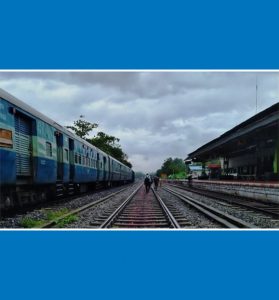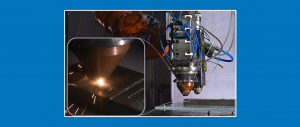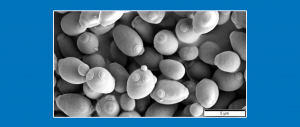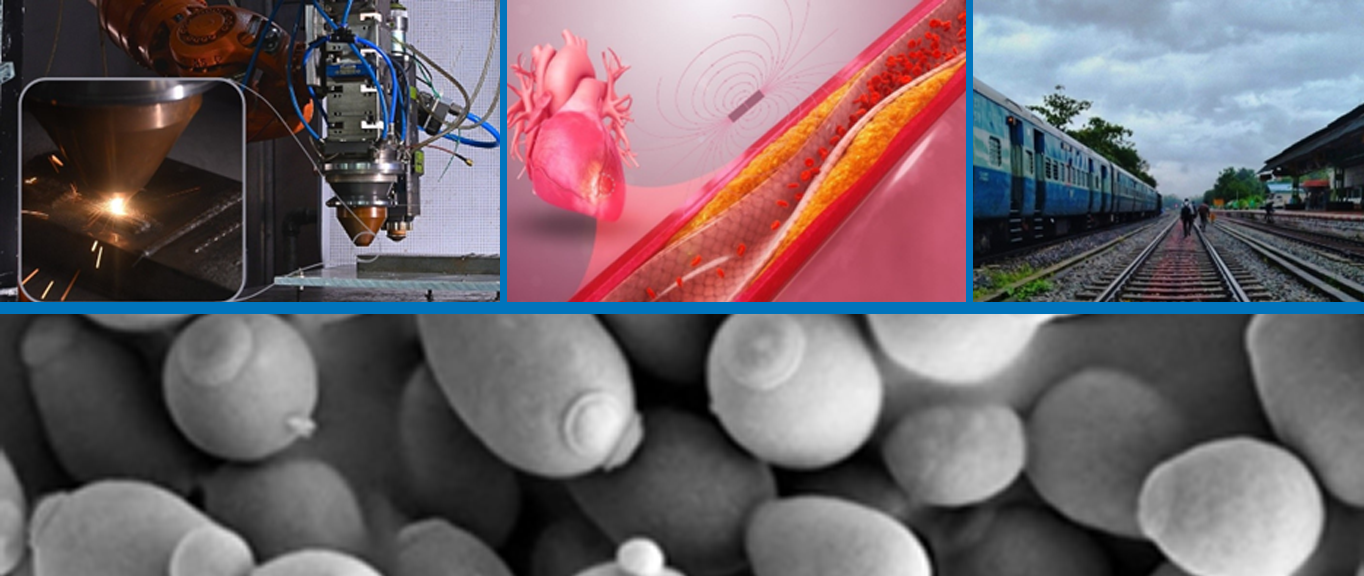1. How Researchers Are Optimising Indian Railways—Without Touching Train or Track

Image Credit: Pixabay – Indian Railway
The following article was originally written by Mr. Ankush Banerjee and publishedhere.
Here’s how IIT Bombay and Indian Railway researchers are making Indian railways more efficient by grouping non-daily trains together for the timetabling process.
Despite the dizzying complexity of all its components, your body is still extraordinarily efficient at what it does. But what if it wasn’t? What if your brain had to manually and non-intuitively chart tedious plans to coordinate what blood flows through which arteries at what time?
Termed by some as the arteries of our economic system, India boasts the fourth-largest railway network worldwide, a technological marvel whose function propels a flurry of crucial socioeconomic development across the country’s various corridors. But how do you upgrade anything without painstakingly replacing hardware that has stood firmly on the nation’s soil for over 160 years? According to a team of collaborators from Zonal Railways, the Centre for Railway Information Systems (CRIS), and the Indian Institute of Technology Bombay (IIT Bombay), you don’t have to — you just need to look at things with fresh eyes.
To understand this new research involving Prof Madhu Belur from the Department of Electrical Engineering, Prof Narayan Rangaraj from the Department of Industrial Engineering and Operations Research at IIT Bombay, and experts from Zonal Railways and CRIS, let’s first look at how trains are timetabled.
In this study, the team grouped Indian trains into two broad categories: daily trains — trains that run on all days of the week — and non-daily trains that run a few times per week. For example, most long-standing trains between popular destinations run daily. In contrast, some trains to very specific destinations run only on specific days of the week — this is quite common when new trains are introduced between pairs of cities where traffic is building up over time. While daily trains have it mostly sorted out, the non-daily ones are a tougher challenge within the Indian railway timetable.
The main issue is that these non-daily trains are scattered throughout the week, making it hard to plan efficient schedules. Another challenge is that different railway zones initially plan their local schedules considering their own sectional resources, and this may result in these non-daily trains having conflicts at other busy sections or sub-optimal use of bottleneck resources on the larger network. To address this, the team of collaborators explored a process called ‘dailyzing,’ which involves clustering non-daily trains to improve scheduling efficiency.
At its core, dailyzing is about grouping “similar” non-daily trains into a single, predictable pattern, almost as if they were a daily service. Similar trains that use almost the same resources and at almost the same times (within a window of 15 min) but on different days of the week are grouped in a cluster. Instead of treating these sporadic trains as independent, railway planners can now map them onto a 24-hour schedule, creating a structured timetable that fills gaps and reduces inefficiencies.
The team used Hierarchical Agglomerative Clustering (HAC) — a technique that identifies patterns in vast amounts of data — to sort trains that run on similar routes at similar times but on different days. These trains are then scheduled as a single “cluster”, ensuring a more compact and efficient timetable. The team found that scheduling one representative train from the group as a ‘daily train’ can help to schedule non-daily trains in that group.
Right now, the Indian Railways operates over 13,150 passenger trains daily across the country, yet many of its non-daily services run inconsistently across the week. This scattered scheduling leads to underutilised tracks on some days and congested bottlenecks on others. By clustering trains, the researchers found they could speed up the timetabling process because once a cluster is scheduled, every train within it automatically follows suit.
Think of it like scheduling a bus for a busy city junction. If five different buses pass through the same junction at the same time of the day but on different days of the week, it would be rather tiresome and inefficient to schedule it as such. But when you cluster all the buses into one “daily” path, you just have to plan for one bus, which will automatically set the times for all the buses in that group.
Further, this method could even make space for new trains. If a cluster has fewer than seven trains (one train for each day of the week), additional services can be slotted in the free days, the research explained. Bottleneck sections could now be managed more effectively, reducing delays and maximising train flow.
To put their model to the test, the researchers focused on India’s Golden Quadrilateral and Diagonals (GQD) network — a vast rail system connecting Delhi, Mumbai, Chennai, and Kolkata. They analysed real-world train data and applied popular clustering techniques such as Hierarchical Agglomerative Clustering (HAC), Density-Based Spatial Clustering of Applications with Noise (DBSCAN) and K-means. The results were striking, showing that HAC produced the best clusters, ensuring that non-daily trains mostly “complemented” each other, rarely causing conflicts. In this context, a cluster satisfies the complementing conditions once all its trains run on the same stretches and at the same time of the day but on different days of the week.
HAC produced conflict-free clusters within seconds, while some other techniques often took several minutes. This speedy method using HAC also helped reveal hidden inefficiencies, pointing out where new trains could be introduced without disrupting the system.
Prof Madhu Belur explained that the model was based on and built for the GQD network for two reasons: the GQD comprises a significant and major portion of the total freight and coaching traffic for the Indian Railways. Secondly, timetables for non-GQD and less frequented railway zones are carried out in a much more zonal fashion, which already simplifies things enough since the lighter volume of trains in these areas makes it easier to timetable their schedules. Interestingly, Prof Belur noted that Indian Railways, with the team’s support in creating an automated tool based on clustering, has already been implementing a modified version of the dailyzing model to enhance timetabling on the GQD. Future refinements could further enhance train scheduling by fine-tuning clusters to include more trains and integrating real-time adjustments, making India’s railway system even more seamless and adaptable.
The researchers acknowledge that as the model scales up, new challenges will emerge. Long-distance trains often pass through multiple congested sections, where a single clustering approach may not be enough. A train that fits neatly into a cluster in one section of its journey may face bottlenecks elsewhere, requiring a different clustering strategy for different segments of the route. Moreover, since railway zones currently handle their timetables independently, future timetabling refinements will need better coordination across zones to fully realise the benefits of dailyzing. Addressing these complexities will be crucial in making Indian Railways even more efficient and adaptable in the years to come.
**********************************************************
The original academic article titled Clustering Techniques to Optimize Railway Daily Path Utilization for Non-Daily Trains was written by IIT Bombay’s researchers and published in the journal, Transportation Research Procedia, Vol 82.
The original paper can be found here.
2. Magnetic Field Regulates Blood Flow in Partially Blocked Arteries

This image has been adapted to suit the story’s needs under the Creative Commons Attribution-Share Alike 4.0 International license.
Original Image Credit: http://www.scientificanimations.com, via Wikimedia Commons
The following article was originally written by Ms. Divyapriya Chandrasekaran and published here.
A theoretical study demonstrates magnetic force lowers blood pressure fluctuations and stabilises flow, setting the stage for advanced cardiovascular therapies.
An alarming report by WHO states that ischemic heart disease was the leading cause of death in the year 2021 among Indians, next to COVID-19. Restriction of blood flow in coronary arteries causes ischemic heart disease. Cholesterol, lipoprotein and calcium accumulate in the arteries forming plaque, narrowing the arteries and restricting blood flow. Blood pressure increases, leading to cardiovascular diseases such as hypertension and heart attacks. Regulating blood flow and pressure in the blocked arteries can help avoid lethal consequences.
A recent study by researchers from the Indian Institute of Technology Bombay (IIT Bombay) showed that magnetic fields can effectively manipulate blood flow, making blood flow faster or slower depending on field direction. The finding opens up possibilities for using magnets in heart disease treatments and provides insights for creating advanced drug delivery systems.
The researchers used a computation framework to simulate and analyse the blood flow pattern. They consider factors such as flow speed (velocity), pressure, and frictional force within the artery walls (wall shear stress). “Wall shear stress (WSS) is the force per unit area exerted by the blood flow along the inner walls of blood vessels. It is a critical factor in vascular health, as abnormal WSS can contribute to the development of diseases like atherosclerosis. WSS is influenced by the blood’s velocity and viscosity along the vessel walls”, says Prof. Abhijeet Kumar, who led the study at the Department of Mechanical Engineering, IIT Bombay.
The researchers devised a numerical model of a blocked artery and studied the influence of magnetic fields in the narrowed arteries using mathematical equations. The magnetic field interacts with iron-rich haemoglobin in the blood and impacts the blood flow depending on the direction of the magnetic field. The researchers calculated the motion of blood (using Navier-Stokes equations), analysed electromagnetic fields (using Maxwell’s equation) and monitored blood thickness or viscosity and flow (using the Carreau-Yasuda Model).
The researchers modelled different stages of narrowed arteries- mild-25 % blocked, moderate-35% blocked, and severe-50 % blocked with varied shapes. The arteries are either evenly narrowed (axisymmetric), off-centric (eccentric), asymmetric, or sharp-edged. Axisymmetric and sharp-edged blockages caused the most severe pressure fluctuation and obstructed smooth blood flow. When the researchers applied the magnetic field parallel to the blood flow, they observed an increased blood flow speed. When they used the magnetic field perpendicular to the blood flow, there was a decrease in the flow speed.
Computational simulations showed that the magnetic field increased the blood flow by about 17%, 30% and 60% in mild, moderate, and severely blocked arteries. Stronger magnetic fields facilitated smoother blood flow. Magnetic field orientation that aligns with the blood flow reduces the pressure near the blockage in the severely stenotic (abnormally constricted) artery. Pressure fluctuations create more shear stress on the plaques (accumulated mass that causes the block), increasing the risk of rupture. The study found that magnetic force stabilises flow and pressure fluctuations in all the stenosis shapes, reducing the risk of plaque rupture.
The findings of the study would help treat patients with hypertension. The results show that the magnetic field influences blood flow, pressure, and wall shear stress. This can further help control high blood pressure and prevent damage to arterial walls. The study underlines the importance of magnets in cardiovascular therapies and enhanced patient care. It also highlights possible developments in innovative drug delivery systems using magnets.
“High and ultrahigh magnetic fields have shown both positive and adverse effects in experimental models, suggesting that safety evaluations are crucial before clinical application… Given the complexities and challenges mentioned, including the need for extensive research, clinical trials, and regulatory approvals, it might take several years before such treatments become widely available,” reminds Prof. Kumar.
The researchers recommend further study, including more realistic models to understand the flexibility and shear stress of a real arterial wall. “The challenges in transforming this research into practical treatments include the complex interactions between magnetic fields and biological tissues, which can impact cellular structures, blood viscosity, and vessel walls. There is a need for careful evaluation to ensure safety and efficacy,” signs off Prof. Kumar.
**********************************************************
The original academic article titled Modelling of Coronary Artery Stenosis and Study of Hemodynamic Under the Influence of Magnetic Fields was written by IIT Bombay’s researchers and published in the journal, Computers in Biology and Medicine, Volume 184.
The original paper can be found here.
3. IIT Bombay’s Laser Trick Makes 3D Metal Printing Faster and Stronger

Laser Additive Manufacturing at Machine Tools Lab, IIT Bombay.
Image Credit : Aaditya Puranik
The following article was originally written by Mr. Ankush Banerjee and published here.
Here’s how IIT Bombay’s Laser Remelting technique is fixing weak spots without slowing down production
What do baking a cake and 3D printing have in common? You can rush both processes, but you’re almost guaranteed to end up with a hunching, sloppy mess by the end of it. While 3D metal printing has proven itself to be a godsend for the manufacture of highly intricate components, there is much to be desired in the time and energy it takes to print something. You can certainly speed up the process, but only if you’re prepared for a horde of structural defects, voids, weak spots, and unwanted phases in the material.
This challenge of speed is exactly what Rajendra Hodgir, a PhD student, Prof. Ramesh Singh and Prof. Soham Mujumdar from the Department of Mechanical Engineering, Indian Institute of Technology Bombay (IIT Bombay) tackled in their latest work. Their research, with Rajendra as the lead author, introduces an extra step, called in-situ laser remelting, in the 3D printing process, where a laser remelts each printed layer before the next one is added. The result is a structure that is stronger and denser compared to before—all while printing 2.5 times faster!
3D printing, also termed “additive manufacturing,” works by the precise layer-by-layer deposition of material fused with the help of external heat or lasers. One of the more common methods of 3D printing metals is Laser-Directed Energy Deposition (L-DED), where fine metal powder is fed through a nozzle and melted by a high-powered laser to fuse layers of metal, one atop the other. Such printing methods are often chosen to create complex parts that are impractical or prohibitively expensive to produce using existing fabrication methods. Features such as intricate lattice structures, multi-material parts with continuous property gradients, and hollow internal channels with complex curvatures are some examples of designs that are uniquely suited to additive manufacturing.
Demand for high-end, precision-manufactured parts is growing, especially in fields like aerospace and biomedical engineering, prompting India to import not just these components but also advanced 3D printing technologies. However, trying to accelerate the metal 3D printing process brings challenges. “High deposition rates—printing a lot of material too quickly—often lead to defects such as porosities, cracks, and residual stresses,” Prof. Mujumdar explains. “In some cases, large grains can weaken the overall structure. Smaller grains are usually preferred since their boundaries act as barriers to crack propagation, making the material stronger and tougher.”
Grains are small crystalline regions within the metal where atoms are arranged in a consistent pattern. In addition to the size of grains, the porosity of the structure is another concern that needs addressing. As the molten metal solidifies, gas gets trapped to form tiny pockets, creating voids that compromise the strength of the 3D-printed structure. To fix these issues, engineers usually rely on time- and energy-intensive post-processing techniques, like heat treatment or hot isostatic pressing (applying large amounts of heat and pressure to metals). Instead of waiting until the end to fix these flaws, researchers at IIT Bombay thought of tackling them during the printing process itself—by remelting each layer just after it’s deposited, before the next one is added.
The researchers found that briefly reheating the material helped eliminate voids and refined the grain structure. The researchers carried out this work at the Machine Tools Lab, Mechanical Engineering Department, IIT Bombay, utilizing the experimental laser DED setup developed in-house by Prof. Singh’s group. They found that compared to the regular L-DED process, laser remelting could reduce the porosity of the 3D printed structure by 83%, improve surface smoothness by 59%, and increase the metal’s microhardness by 34%. The best part is the fact that the technique requires zero new machinery. “It’s happening on the same machine. You just turn off the powder and run the laser,” Mujumdar noted.
The next challenge was to find that sweet spot between speed and quality. Using a high laser power certainly helped with the porosity problem by deepening the remelting, but it also takes a large amount of energy to fuel this process. On the other hand, lower power helped refine grain structure and strengthen the material, but it wasn’t nearly as successful at eliminating the defects in the structure. The researchers experimented with different power levels and scan speeds until
they found an optimal combination, allowing them to maintain high build rates while improving material integrity.
They discovered that using 2000 W power and a 400 mm/min scan speed created the densest final structure in stainless steel (SS316L), the material used in this study. SS316L stainless steel is used everywhere—from aerospace components to biomedical implants, from industrial machinery to kitchen appliances. Not only will a faster, more reliable 3D printing method transform manufacturing in these industries, it can be a great push towards India’s focus on self-reliance in advanced manufacturing.
“The manufacturing sector is booming right now because of the government’s initiative to make everything in India,” Mujumdar explained. Innovations like in-situ laser remelting could help the country move closer to that goal, strengthening its industrial and technological capabilities. However, since different metals have varying thermal and mechanical properties, these specific parameters may not apply universally. Further research would be needed to determine the optimal conditions for other materials.
The researchers are now refining the process to make it even more energy and time-efficient. Instead of remelting after every layer, they are testing whether doing it every second or third layer can achieve the same benefits at a lower cost. They are also developing computational models to predict how different remelting parameters influence material properties, allowing for smarter and more optimized manufacturing.
Funding Information: This research was funded by a grant from the Science and Engineering Research Board (SERB), (now, Anusandhan National Research Foundation), Government of India.
**********************************************************
The original academic article titled Simultaneous Enhancement of Build Rate and Microstructure in SS316L Additive Manufacturing Through In-Situ Laser Remelting was written by IIT Bombay’s researchers and published in the Journal of Manufacturing Processes, Volume 133.
The original paper can be found here.
4. The Hitchhiking DNA: How a Tiny Circular Piece of DNA Tricks the Yeast for Survival

Budding yeast as seen under the microscope.
Image Credits: Mogana Das Murtey and Patchamuthu Ramasamy, CC BY 3.0 via Wikimedia Commons
The following article was originally written by Mr. Manjeera Gowravaram and published here.
For generations, a tiny piece of DNA has mastered the art of inheritance by hijacking the yeast cell’s division machinery, despite providing no known benefit to its host, the yeast.
Inside every living cell, DNA holds the instructions for life, and it is stored in its chromosomes. But plasmids— small, circular pieces of DNA, exist independently of an organism’s chromosomes, offering an extra set of genes to be passed between cells. Plasmids are most commonly found in bacteria, providing them with advantages such as antibiotic resistance. However, the plasmid present in many yeast species does not provide any known benefit to yeast cells, but still has mastered the art of survival for many generations, earning the term “selfish” DNA. This plasmid makes up only a tiny fraction (0.25–0.37%) of the yeast’s total DNA and measures approximately 2 micrometres in size—hence, it is known as the 2-micron plasmid.
In a recent article, Deepanshu Kumar and Santanu Kumar Ghosh from the Indian Institute of Technology (IIT) Bombay’s Department of Biosciences and Bioengineering review the strategies the 2-micron plasmid uses to interact with its host cell for survival. They focus on the roles of specific plasmid proteins and their interactions with host proteins and chromosomes. They also explore how the 2-micron plasmid attaches to chromosomes to ensure it is passed on during cell division. Understanding these mechanisms provides insights into how additional genetic elements are maintained and inherited in different organisms, helping develop therapeutics and synthetic biology applications.
Yeast cells reproduce by budding, where a small daughter cell forms and grows out from the parent cell. Before division, the yeast cell duplicates its chromosomes, wherein both the mother and daughter cells receive a complete set of genetic material. Similarly, the 2-micron plasmid also duplicates and gets evenly distributed between mother and daughter cells. The review reports that each yeast cell contains 40-100 copies of the 2-micron plasmid. Instead of dispersing randomly, these multiple copies tend to cluster into 3-4 tightly bound groups.
“The probability of these clusters remaining in the mother cell during division is significantly high. To make sure they are passed on, the 2-micron plasmid needs a system to evenly distribute between the mother and daughter cells,” explains Prof. Ghosh. So, instead of floating freely and risking uneven distribution, the 2-micron plasmid has evolved a clever trick of hitchhiking. It attaches itself to the host cell’s chromosomes, ensuring it gets separated along with them during division. “This hitchhiking mechanism prevents the plasmid from being trapped in the mother cell and guarantees that copies are consistently passed on to the daughter cell,” says Prof. Ghosh.
The plasmid’s hitchhiking process relies on two proteins, called Rep1 and Rep2, which bind to a specific site on the plasmid. Several yeast proteins involved in chromosome segregation form a ‘partitioning complex’ at that site. The complex allows the plasmid copies to stay attached to the duplicated chromosomes, ensuring they get evenly distributed during cell division.
In 2023, using genomics, interaction analyses, and cell biology techniques, Prof. Ghosh’s team showed that plasmids use a cellular protein complex (RSC) to help them stick to chromosomes. The researchers found that of the two similar versions of this complex in yeast, only one (RSC2) plays a key role. RSC2 interacts with both the Rep proteins and the cell’s division machinery, acting as a bridge to attach the plasmid to the chromosomes.
The plasmid attaches to specific parts of the chromosomes. In another earlier research, Prof. Ghosh’s lab and others found that the 2-micron plasmid mostly attaches to inactive regions of the chromosome, such as the ends, the middle regions, and regions that help make ribosomes (rDNA). These regions are compact and are less involved in producing proteins, making them a stable place for the plasmid to attach.
The researchers also found that certain proteins, like cohesins and condensins, that help chromosomes to separate properly during cell division are part of the partitioning complex and thus promote plasmids attaching to chromosomes. However, they only become part of the partitioning complex when Rep proteins are present. In the absence of these Rep proteins or when they were altered, the 2-micron plasmids failed to separate properly, leading to uneven distribution.
“The exact role of cohesins and condensins in plasmid attachment to chromosomes is still unclear, but they may act as cementing agents that help keep plasmids attached,” says Prof. Ghosh.
If the plasmid doesn’t benefit the yeast, why hasn’t evolution wiped it out? The review highlights that the answer lies in the plasmid’s inheritance strategy. By mimicking chromosomes, the plasmid makes the yeast cells incapable of recognising it as a foreign invader. Unlike foreign DNA that gets quickly eliminated, “by hitchhiking along with the host’s chromosomes, the 2-micron plasmid avoids the metabolic cost of developing its own segregation mechanism,” remarks Prof. Ghosh. The plasmid thus becomes a successful parasitic DNA.
According to the review, the plasmid’s hitchhiking strategy isn’t unique. It is similar to plasmid-like DNA present in many viruses. For example, the human papillomavirus (HPV) survives by attaching its plasmid-like DNA to human chromosomes using virus-made proteins, akin to how the 2-micron plasmid does. Both target inactive regions of chromosomes, suggesting a shared evolutionary strategy. By studying the 2-micron plasmid, researchers can better understand how viral genetic materials are maintained within host cells and could aid in developing antiviral strategies.
**********************************************************
The original academic article titled Chromosome Hitchhiking: A Potential Strategy Adopted by the Selfish Yeast Plasmids to Ensure Symmetric Inheritance During Cell Division was written by IIT Bombay’s researchers and published in the journal Biochemical Society Transactions.
The original paper can be found here.

